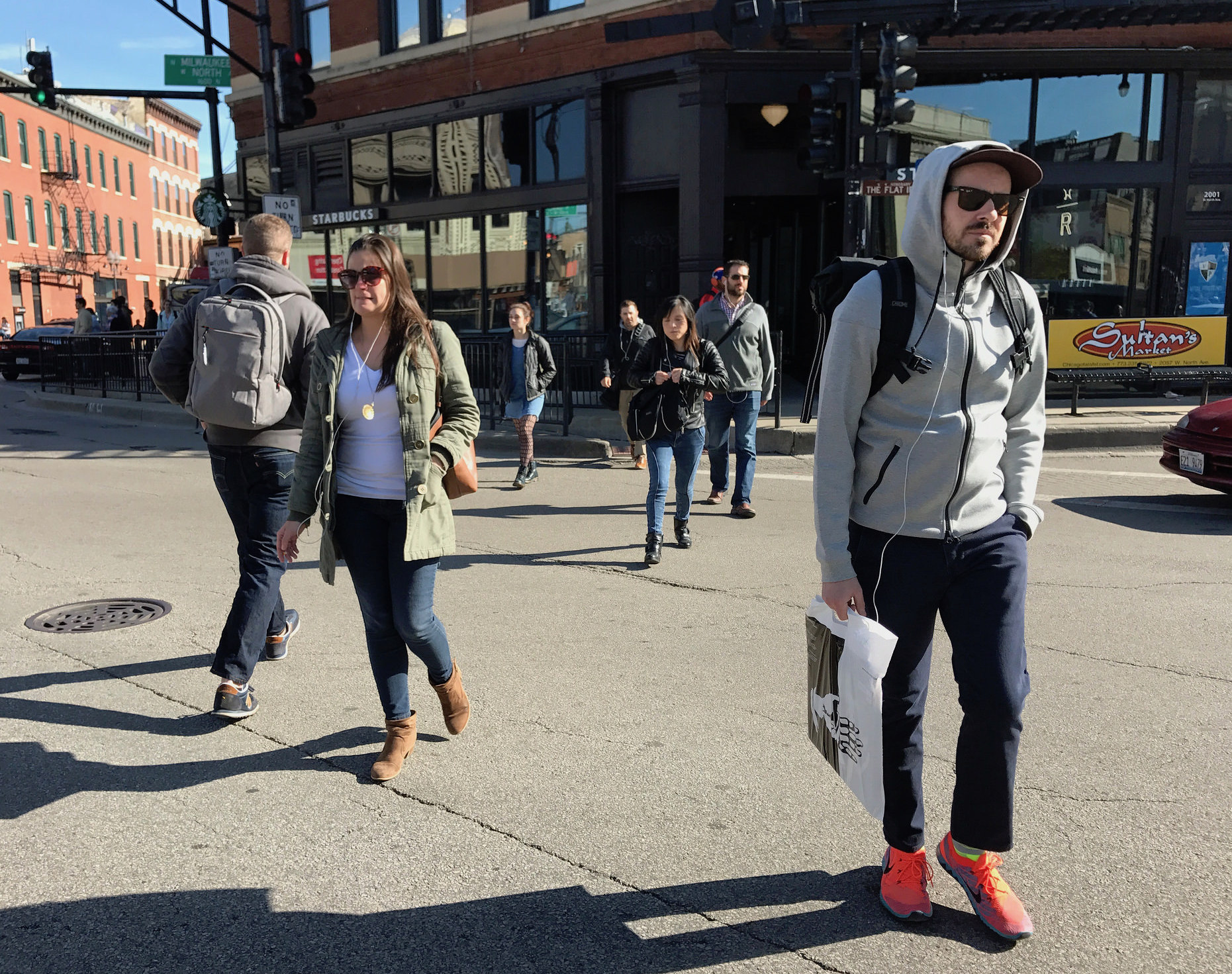[The Chicago Reader publishes a weekly transportation column written by Streetsblog Chicago editor John Greenfield. We syndicate the column on Streetsblog after it comes out online.]
First, let's tackle the nickname controversy. I recently took part in a Twitter debate about the proper nickname for the six-way intersection of Damen, North, and Milwaukee. "Stop calling it Six Corners," exhorted Robert Loerzel (winner of the Reader's 2016 reader poll for Best Chicagoan to Follow on Twitter), arguing that the real Six Corners is in Portage Park.
Afterward I took an unscientific poll on Facebook, asking friends how they refer to the junction. Of the more than 50 people who responded, 18 suggested "the Crotch," nine offered various combinations of the street names, five said Six Corners, three said "Hell," and "Ground Zero" and "Over by the Flat Iron" got two votes each. Other replies included "Hexaf---," "The Armpit," and "Lake Geneva for Gutter Punks."
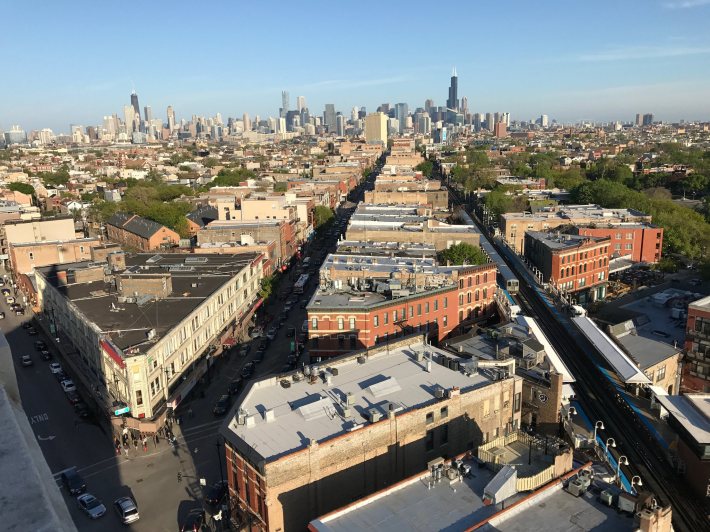
Now that that's out of the way, let's look at the city's proposal to improve safety at this crossroads, which features a hectic confluence of pedestrians, skateboarders, cyclists, cars, trucks, buses, and, occasionally, a bearded dude on a bike with a roll bar who does somersaults for tips.
Last week, during a community meeting at Pritzker elementary, Chicago Department of Transportation reps outlined some "low-cost, quick-hit" upgrades to the intersection that they hope to make by the end of the year.
First CDOT staffer Mike Amsden provided some basic stats, telling the audience that the department had observed more than 5,000 pedestrian crossings at the junction during the morning and evening rush hours of April 18. CDOT found that more than 800 people bicycled through the intersection during the AM peak, accounting for 40 percent of vehicles on Milwaukee, often dubbed "the Hipster Highway."
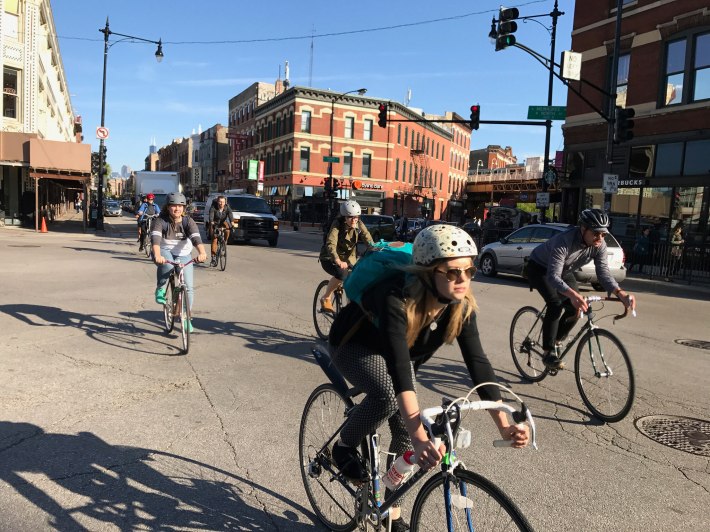
The bad news is that Milwaukee is also a high-crash corridor, with 1,097 collisions in the area between 2010 and 2014, according to the city. While only 20 percent of the crashes involved pedestrians and bicyclists, these vulnerable road users were involved in 66 percent of crashes that resulted in injuries.
Amsden outlined several ideas for improving the area's safety. To create more standing room and shorten crossing distances, flexible plastic posts and street paint could be used to create temporary curb bump-outs, which could eventually be made permanent with concrete.
Banning some left turns could also free up space for wider sidewalks by eliminating turn lanes, which could also reduce collisions and congestion. Amsden said that this approach would need to be done cautiously so as not to divert high numbers of cars to side streets.
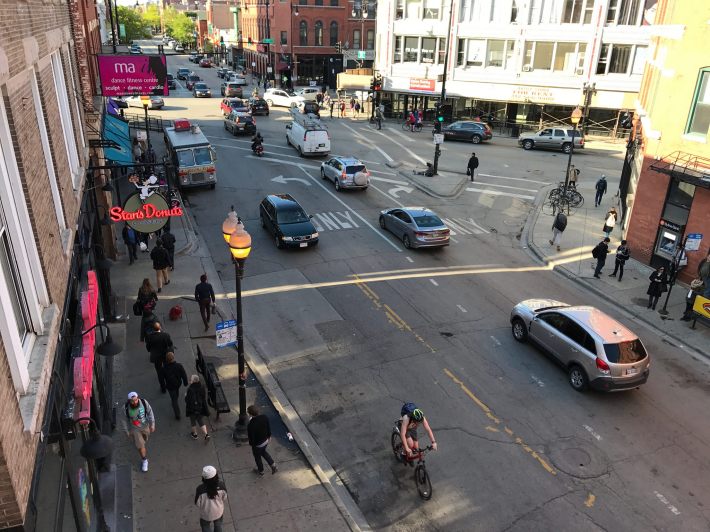
Another proposed idea is to close the "slip lane" at the south side of the Crotch, a channel between a pedestrian island and the sidewalk that allows drivers to make fast right turns but also endangers and inconveniences pedestrians. While CDOT counted more than 1,000 people walking across the slip lane during rush hours, a measly 32 motorists used it during the same period of time.
The department also found that about 400 pedestrians, largely Blue Line commuters heading to Bucktown, made an illegal crossing between the Starbucks at the southwest corner of the intersection and the Walgreens at the northern corner. They may sanction this move by painting a new crosswalk.
Similarly, CDOT may legalize a harmless bike maneuver I call the Six Corners Shuffle. (Sorry, Portage Parkers.) When Milwaukee has a red, southeast-bound cyclists cross North Avenue with the walk signal, then wait for a green in front of the Starbucks to get a head start on car traffic. While police wrote lots of tickets for this move during a January sting, recent counts revealed that a whopping 65 percent of southeast-bound riders still do it, so CDOT may install a dedicated green light for bikes to legitimize the practice.
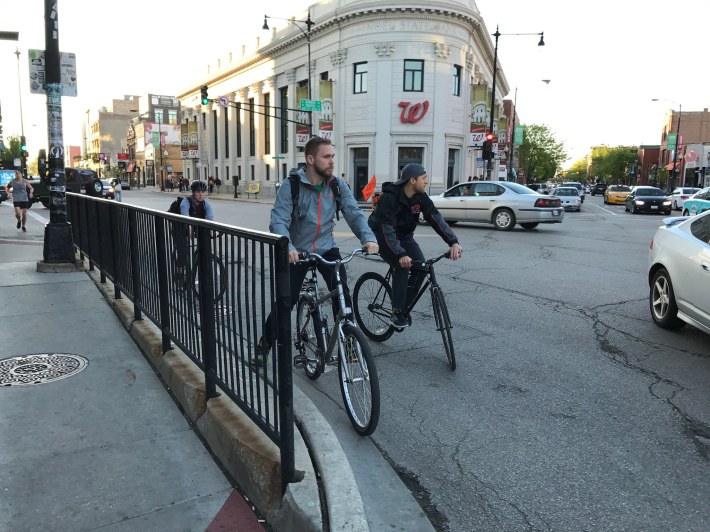
And because 28 percent of vehicles on Milwaukee in Wicker Park-Bucktown are bicycles, according to CDOT, but the road is currently too narrow for bike lanes, the department has floated the idea of stripping parking from one side to make room for the lanes. Since residents and business owners tend to freak out about parking removals, that would be a heavy lift politically, and the city would also have to compensate the parking meter concessionaire for any loss of revenue, so that seems unlikely to happen anytime soon.
The feedback at last week's meeting was generally positive, and local aldermen Proco Joe Moreno, Brian Hopkins, and Scott Waguespack all said they plan to chip in ward funds for the project, which is currently budgeted at $150,000.
To further check the community's pulse on these proposed changes, I dropped by the crossroads to buttonhole people during last Thursday's evening rush.
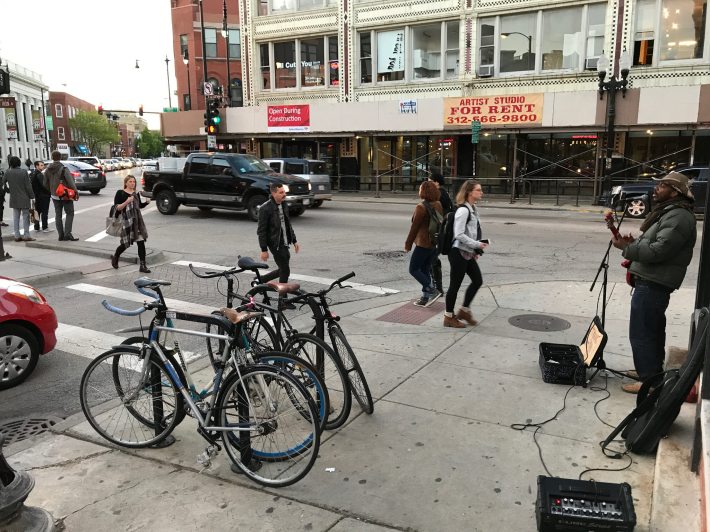
Aaron Evenhouse, who works at the new Publican Anker restaurant just south of the slip lane, said he's wary of banning right turns there, since he often makes them on his bike. But he endorsed the bump-outs, bike signal, and crosswalk, and said banning some left turns might work. He regularly does the illegal Six Corners Shuffle and Starbucks-Walgreens crossing himself, he said, choosing to jaywalk because "otherwise you've got to cross twice and go out of your way."
Schoolteacher Kristine Morozink said of the curb extensions and slip lane closings, “I really don’t see these as big issues, so I would probably rather see the money go somewhere else.” However, she was open to the idea of prohibiting some left turns, and in favor of legalizing the pedestrian crosswalk and bike shuffle. “I’ve totally done that bike move. It would be great if it was safer and we knew when to go.”
Priya Matthew, a tech worker coming home from O'Hare via the Blue Line, said she rarely drives, so didn't have an opinion about limiting car movements. But she supported adding the crosswalk and widening the corners for pedestrians with paint and posts. "It's really hard to move around this intersection," she said.
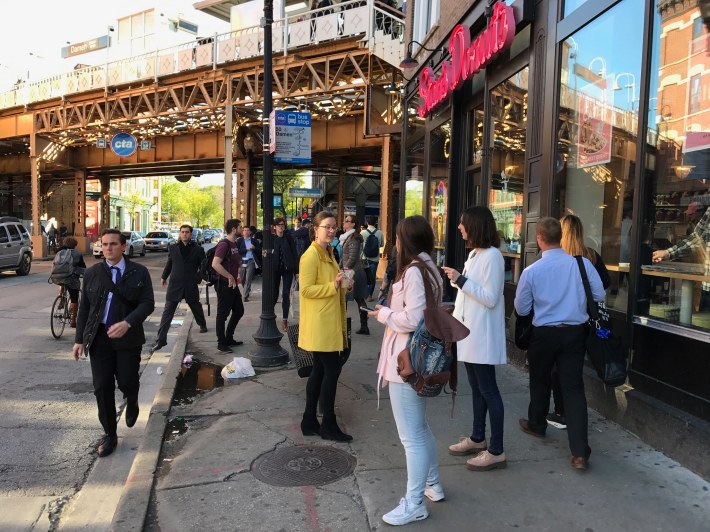
I also spoke with Jake, a driver who declined to give his last name, while he was stopped at a red, waiting to make a left turn from northbound Damen. Interestingly, he said he supports banning all lefts for motorists as a strategy to unclog the junction. "This whole intersection should just be straight-ahead for drivers," he said.
On the other hand, Erik Bowman, an assistant manager at a nearby sports bar, was opposed to any restrictions on drivers, even though he generally takes the Milwaukee bus to work.
"Car traffic is what we bank on—hopefully people driving by see the bar," he said. He argued that banning lefts, closing the slip lane, and adding the crosswalk would be a mistake. "The neighborhood is congested enough already. Why not leave it the way it is?"
But I agree with Rick Paragua, who works at a suburban balloon factory and was in Wicker Park looking for housing last week. "This intersection is teeming with people 24/7, and they need to be protected," he said. "I hope the city will do something about it. It's about time."
Indeed, as the traffic counts and crash numbers indicate, the status quo isn't working. It's high time for CDOT to correct the Crotch.
